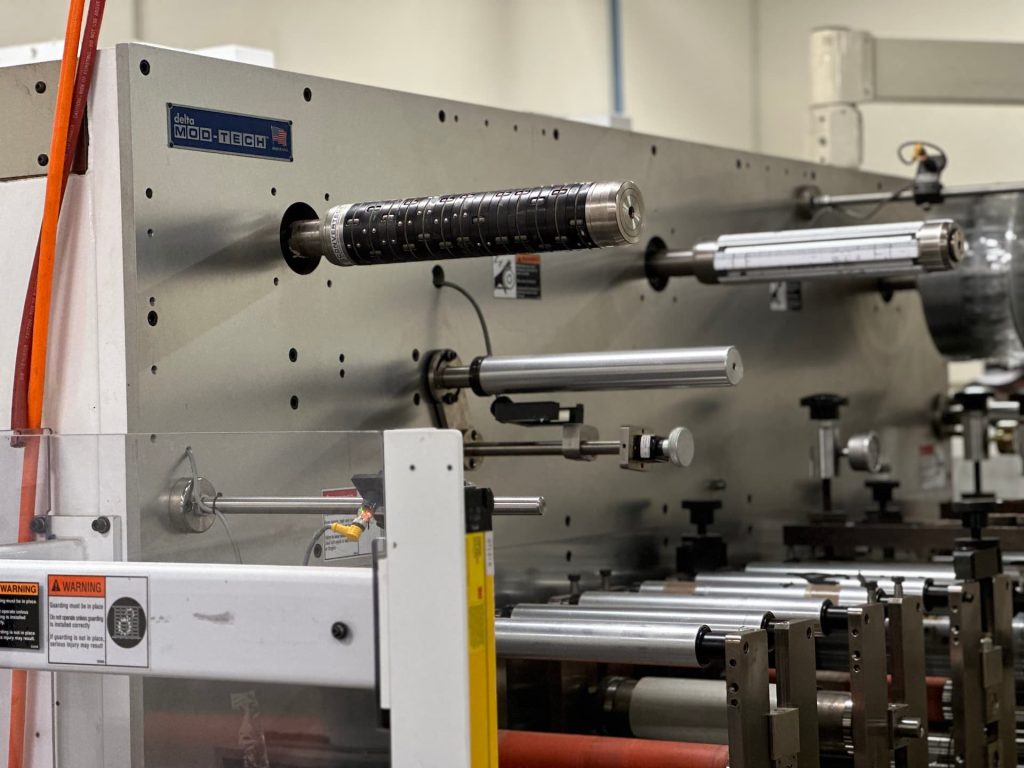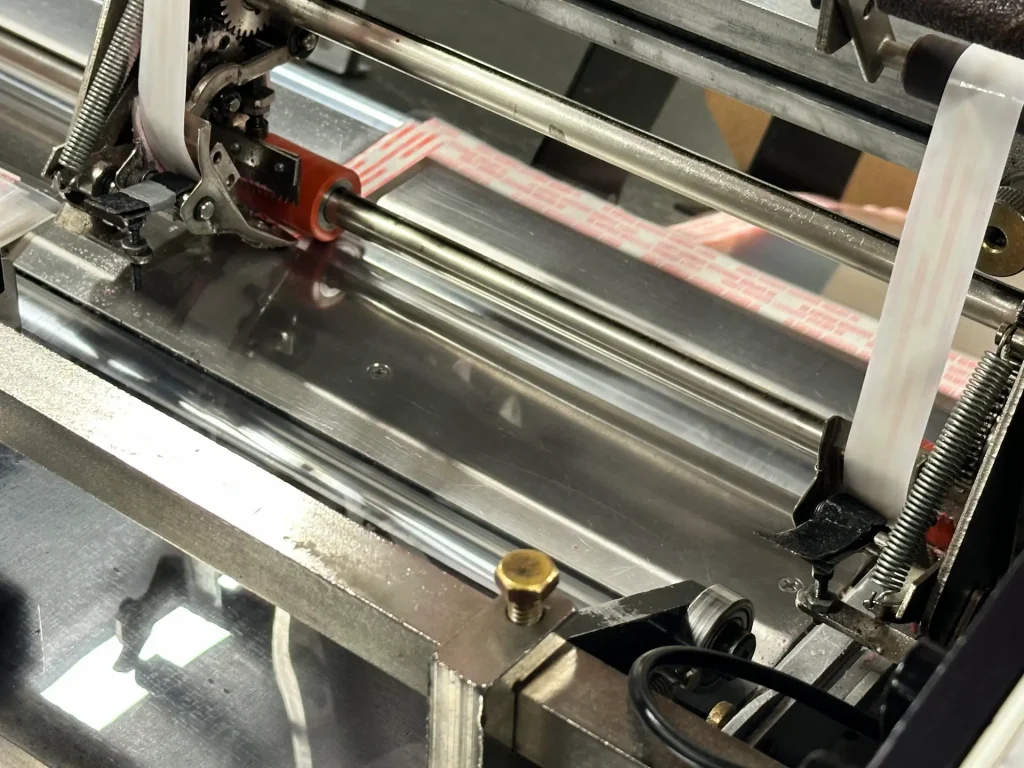
One of the oldest die-cutting companies in the United States, Colvin Friedman’s experience speaks for itself. We have cut millions of units, fulfilled thousands of orders, and are known for our quality steel rule die-cutting. The table below outlines our steel rule die-cutting capabilities.
Or call Josh at (707) 769-4488
Steel rule dies are utilized in flatbed die cutting to affordably and efficiently maintain an accurate die cut. Steel rule die-cutting uses a specific type of die made of hardened steel rule, pressed into the back of laser etched high quality plywood and/or acrylic.
We can generally utilize steel rule dies to cut products within the following parameters. We may be able to cut projects outside of these parameters, depending on the size and material. For projects under this range, we may recommend rotary die-cutting. If we cannot cut your product, we will refer you to someone who can.
Maximum Product Width
Maximum Product Thickness
Tolerance Level
Maximum Production Capacity
Average Lead Time
40 inches
.5 inches, material dependent
±0.010, material dependent
2,000 – 4,000 parts/hour (size dependent)
3 weeks


If you are unsure whether your product or component can be rotary die cut consider contacting our Vice President Josh Rodman for more information. Also if you are changing your rotary die-cutting provider and wish to understand our pricing and see examples of our work product Josh will provide any needed information.
Or call Josh at (707) 769-4488
Steel rule dies are a versatile tool and can be used for a wide variety of products. It is most commonly used for cutting two-dimensional, mass-produced components out of stock and custom materials. Some of the most common applications are compiled in the table below.
We are able to steel rule die-cut most materials for your products or components. Our most frequently used materials are outlined below:
Plastics
Metal Foils
Paper Products
Textiles
Composite Materials
Polyvinyl Chloride (PVC)
ABS
High & Low Density Polyethylene (HDPE/LDPE)
Polypropylene (PP)
High Impact Polystyrene (HIPS)
Aluminum Foil
Copper Foil
Specialty Paper
Cardboard
Cardstock
Polyester
Nylon
Wovens and nonwovens
Fiberglass
Carbon Fiber
If you are uncertain about which material is right for you, we can provide a recommendation that best suits the needs of your project. We consider the following factors to keep in mind when selecting a material to be die-cut:
Our experts are able to help consult to select the best materials and inform you of your options. For more information contact our Vice President, Josh Rodman, via the number below.
Or call Josh at (707) 769-4488
With experience stretching across the better part of a century, we have steel rule die cut products for companies across the US and the World. Our expertise includes the production of:

Customers are often unsure if steel rule die-cutting is the right die-cutting option for their project. The following checklist provides a list of considerations and potential advantages to review when considering steel die-cutting.
If your project has requirements different than these, we may be able to offer Rotary die cutting as an alternate option. Below we have outlined some advantages and disadvantages.If your product steps outside of these you may consider flatbed die cutting. We also offer flatbed die cutting and can help you choose between the two.
Suitable for high-volume orders providing economies of scale
Consistently high precision ideal for complex and detailed designs
Efficient material utilization reducing waste and costs
Faster turnaround times for large orders
Higher setup costs making it less economical for small batches
Limited to materials in roll form reducing material options
Changes in project scope or design can be costly and complex to implement
Typically requires a long-term commitment due to setup investment
More adaptable for low to medium volume without high setup costs
Dies are relatively inexpensive, adaptable to changes
Flexibility in setup allows for customization and changes in design
Often more cost-effective for short runs and prototypes
Slower production rates can lead to longer turnaround times
Steel dies may dull more easily, requiring replacement and maintenance
Operation can increase labor costs due to material handling
Less suitable for very high-volume jobs due to slower speeds
If you are unsure if steel rule die cutting is the best choice for your project, please contact our experts who can provide you with more information, as well as additional options. To get a free quote or begin the process, please click the button below.
Or call Josh at (707) 769-4488
Our process is fine-tuned to ensure the products we produce are of the highest quality. We make sure all components and designs are cut to your specifications and perfectly fulfill their function. The below diagram outlines our process.
01
During our first consultation, we begin by considering the purpose of your products, your design specifications, and the style of die cutting best suited to the component. We determine the appropriate material, as well as the finishing and tolerance requirements of the product. If necessary, we will design a prototype. Following the design approval, we create a series of test products to verify the design’s quality.
02
Before the production process, we perform tolerance level tests, overall dimension tests, and fit and function tests to test the quality of the design. If the product does not pass the tests with flying colors, we will assist in design refinement to ensure a smoother manufacturing process. At this stage, the customer may perform their own tests and provide feedback. We can create multiple iterations of the product to enhance quality and functionality.
03
The product is continually tested throughout production by our full QMS (quality management system) to guarantee its fitness. Quality tests are performed at the incoming, in-process, and final stages of production, and sampling procedures can vary based on customer specifications.